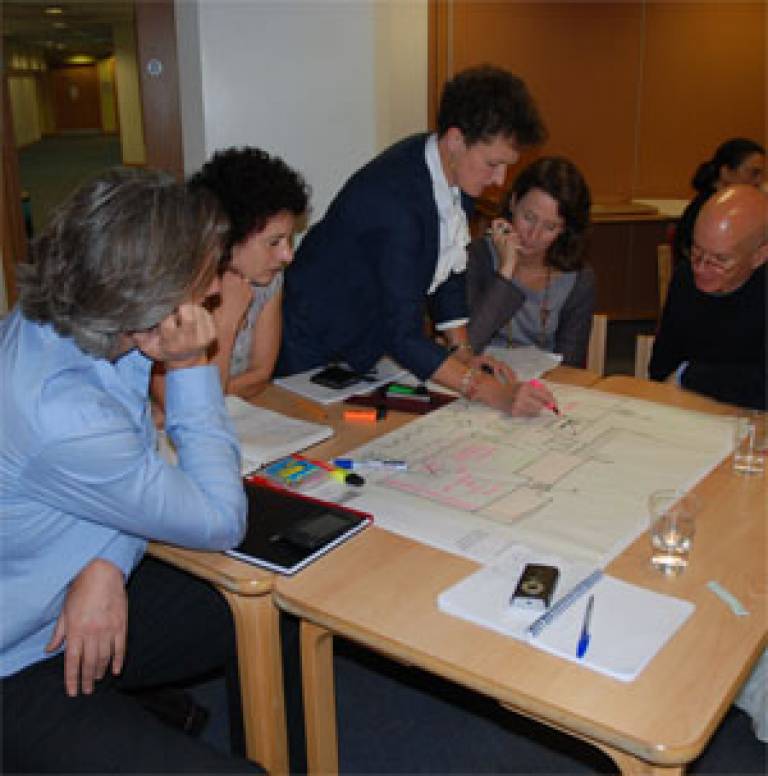Teaching and Learning Spaces workshop at UCL
15 September 2011
The design of teaching and learning spaces to enhance the student experience at UCL is a central aspiration of the Bloomsbury Masterplan, UCL's vision to transform its campus over the next decade.
 A recent workshop on this theme gave UCL staff the chance to learn from the experiences of the University of Melbourne.
A recent workshop on this theme gave UCL staff the chance to learn from the experiences of the University of Melbourne.
The workshop was delivered by Professor Peter Jamieson (University of Melbourne) and attended by over 30 colleagues from across the UCL community, turning out to be a lively and productive day for all concerned.
Giving a presentation of exemplar teaching and learning spaces from the University of Melbourne, Professor Jamieson challenged the attendees to fundamentally consider how the projects we work on contribute to improved teaching and learning. The ability and need to dream at the start of the project process was emphasised to ensure the realisation of the best solutions at completion.
Colleagues from the Student Union, academic departments, the Library, and central support services were divided into pre-selected groups of seven with each group allocated a real UCL site. Each group was tasked with visiting and experiencing their site, looking at it afresh; environmental and physical factors were noted. To assist with the creative process, all were encouraged to approach the exercise with their professional and disciplinary 'hats off'.
Following this the groups were asked to come up with a metaphor for their site based on which they would create a vision for what the space could become, and then to put their ideas to paper in any form that would convey their vision and itscorrelation to their site.
Finally each group presented their ideas to the workshop with wonderful results. Among the presentations were metaphors of Stone Henge at the Archaeology Building, a river complete with whirlpool in the Wilkins Cloisters, and an amphitheatre at the Japanese Gardens. The Cruciform basement was interpreted as a theme park with its own helter-skelter, while the Engineering Faculty building on Gower Street was inspired by a theatre workshop, with the students providing the performances through experiential learning.
Throughout the presentations a number of common threads emerged, such as the opening out of spaces, the widening of participation both within UCL and with the local resident and business communities, the importance of effective routes to and though spaces, the interaction between academics and students to aid changes in the UCL teaching curriculum, and the possibilities of showcasing the vibrant and interesting work, activities and collections held at UCL.
The workshop was overwhelmingly considered a success by those who attended, with agreement on how time invested exploring possibilities at the beginning of a design project greatly enhances its chances of achieving successful outcomes.
At the close Professor Jamieson thanked everyone for their enthusiastic participation, with the Director of Estates Andrew Grainger extending appreciation on behalf of all present and UCL for the time and effort kindly provided by Professor Jamieson in facilitating such an enjoyable and enlightening day.
Finally Andrew Grainger assured all that their efforts would be an important contribution, informing the development of these sites and the new, more engaging ways of briefing for new projects as a new capital works programme emerges from the Bloomsbury Masterplan.
By Nawed Khan
 Close
Close

